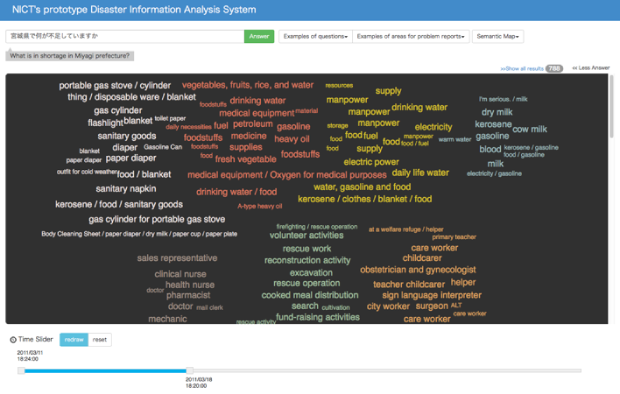Twitter played a significant role in the aftermath of the 2011 Great East Japan Earthquake by providing a huge amount of disaster-related information. However, such posted information was not effectively utilized to help people.
At NICT, we are developing Disaster Information Analysis System that can organize a large amount of disaster-related tweets to support victims and rescue workers in large-scale disasters. Its core element is a question-answering (QA) engine that extracts answers to such questions as “What is in short supply in Fukushima?” from a large amount of disaster-related tweets. We estimate that more than 50 million disaster-related tweets were posted within one month after the Great East Japan Earthquake. Based on these, our system provides a wide range of answers, including such unpredictable ones as allergy-friendly food for children and psychotropic medicine, both of which were scarce in the damaged areas.
Our system can also present the location names provided by the QA engines on a map and help users grasp the “big picture” of the damage and the rescue activities. It also has functionality that links the tweets reporting a particular problem and others reporting aid activities that address it. This will help reduce the redundancy in rescue activities. Finally, the system can find tweets that refute other tweets for assessing credibility.
We believe that it will be indispensable for dealing with such unpredictable disaster situations, because our system can effectively organize the massive amount of tweets posted in future disasters.








